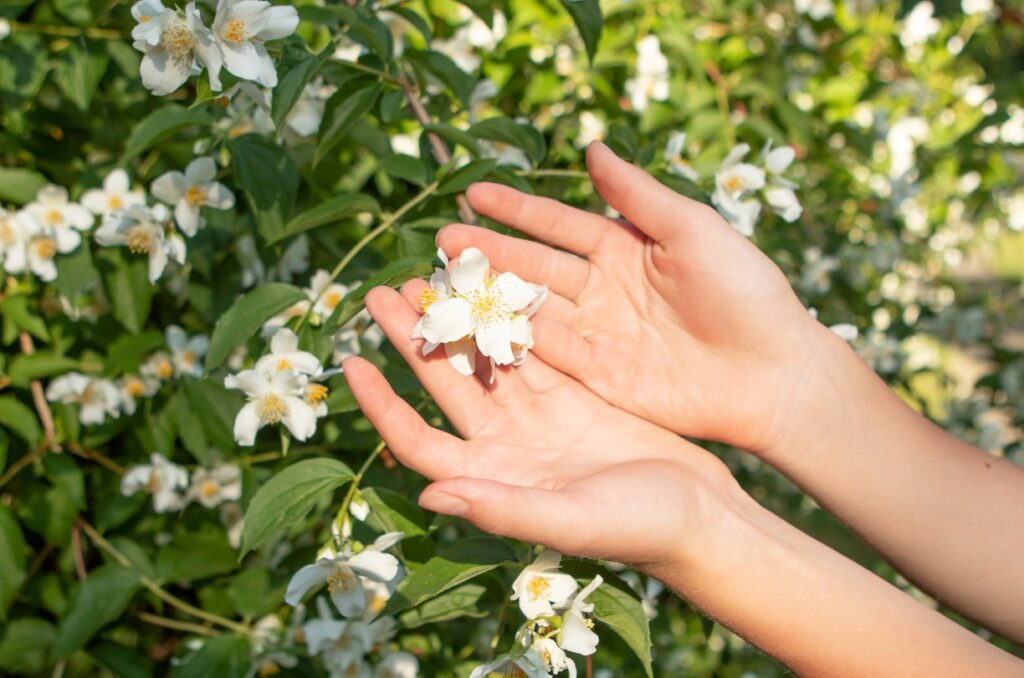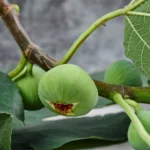Starting a jasmine garden at home offers more than just a fragrant retreat—it becomes a living extension of personal style, warmth, and serenity. The unique aroma of jasmine has a nostalgic quality for many, evoking summer evenings on porches and quiet moments in the garden. As women who take joy in designing beautiful spaces around the home, adding a jasmine garden is a fulfilling project that brings both beauty and purpose to outdoor areas. Whether you’re lining your backyard fence with trailing vines or planting a few fragrant shrubs by the doorstep, jasmine blends charm with practical functionality in a way few plants can.
Choosing the Right Type of Jasmine
Before we dig into the soil, let’s choose the type of jasmine that aligns best with your climate and design goals. There are over 200 species of jasmine, but only a few are commonly cultivated in home gardens.
Common Types of Jasmine for Home Gardens
- Common Jasmine (Jasminum officinale): Best for cooler climates. It features star-shaped white blooms and thrives as a climbing vine.
- Arabian Jasmine (Jasminum sambac): A tropical favorite with rounded white flowers famously used in teas and perfumes.
- Pink Jasmine (Jasminum polyanthum): Known for rapid growth and pinkish buds that open into white, intensely scented blooms.
- Winter Jasmine (Jasminum nudiflorum): A deciduous, yellow-blooming option that flowers in late winter—ideal for adding color during colder months.
When choosing a type, consider your region’s hardiness zone, sunlight availability, and the intended structure (climbing versus bush). Pink Jasmine, for instance, is perfect for trellises and arbors, pairing wonderfully with other vertical flowering climbing vines.
Understanding Light and Soil Requirements
For a thriving jasmine garden, sun exposure and proper soil are non-negotiables. Most jasmine species love full sun, needing at least four to six hours of direct light a day. Placing your plants against a south-facing fence or along a garden wall maximizes light absorption.
Soil Preferences for Jasmine
Jasmine prefers well-draining, moderately fertile loamy soil with a slightly acidic to neutral pH. To improve drainage and maintain roots’ health, consider blending compost or organic matter into existing soil. For those working with container gardens on porches or patios, use high-quality potting mix formulated for flowering plants.
Consistent watering is critical in the early stages. Once established, many jasmine types display moderate drought tolerance, though not without sacrificing flower production. Should you tackle clay-heavy soil or struggle with poor drainage, raised beds or large pots may offer a better fit.
Planting and Spacing Your Jasmine Garden
Once the soil and location are prepped, it’s time to plant. Spring is usually the best time to start a jasmine garden since the danger of frost has passed and warmer soil promotes quicker root development.
Step-by-Step Planting Tips
- Dig holes twice as wide and slightly deeper than the root ball of your plants.
- Mix in compost with native soil to promote healthy root anchoring.
- Position the plant so the top of the root ball is level with the ground surface.
- Backfill the hole gently but firmly.
- Water thoroughly after planting to settle the roots.
For climbing varieties, space plants around 8 feet apart. Bushier types, like Arabian Jasmine, can be planted closer—about 4 feet from one another. Incorporation of trellises or archways adds vertical interest and gives the vines a natural direction to follow.
Complementing jasmine with other fragrant or flowering species enhances the sensory experience. You may also consider planting tiny white flowers nearby to create a visually harmonious theme.
Supporting Growth: Feeding and Pruning Jasmine
Jasmine grows vigorously and benefits from seasonal feeding. In spring and summer, apply a balanced 10-10-10 fertilizer or opt for a phosphate-rich formula to support flowering. Container-grown jasmine may require feeding once every 4 to 6 weeks during the growing season due to nutrients leaching out with watering.
Pruning is both aesthetic and functional. Left unattended, jasmine vines can grow unruly. Annual pruning after the flowering season controls shape and promotes airflow, reducing disease risk.
Pruning Tips:
- Remove dead or damaged branches first.
- Thin out older stems to promote new growth.
- For vining jasmine, trim back no more than one-third of the growth in one session.
Cuttings from healthy plants can be propagated—a rewarding task that allows you to grow new plants at no cost. Like fig trees from a cutting, jasmine cuttings root well when placed in moist, warm environments.
Managing Common Issues in a Jasmine Garden
Pests such as aphids, whiteflies, and spider mites are occasionally drawn to jasmine’s tender foliage and sweet blooms. Check under leaves and along stems regularly—early detection helps avoid infestations.
To manage these naturally:
- Spray neem oil or insecticidal soap weekly during heavy infestations.
- Introduce beneficial insects like ladybugs that feed on harmful pests.
- Avoid overwatering, which can lead to fungal root rot.
Ants often follow aphids because they are attracted to honeydew secretions. If you notice ants marching near your jasmine, take preventive actions using natural home remedies for ants in the kitchen that work equally well in outdoor spaces.
Designing with Jasmine: Visual and Emotional Appeal
The visual softness of jasmine’s white, star-like blossoms draws people in, but it’s the scent that sparks a deeper connection. We associate jasmine with old-fashioned romance, late summer walks, and calming moments after a long day. For me, seeing jasmine trail along my front porch rails takes me straight back to my grandmother’s garden in Georgia—scented with sweetness and Southern patience.
Design-wise, jasmine works beautifully in backyard corners, across entry trellises, or integrated into planter boxes. Combine it near seating areas where the smell can be enjoyed up close, especially during twilight hours when the fragrance peaks. If you’re considering an exotic companion plant, bougainvillea offers striking color contrast and thrives in similar conditions.
For those living in apartments or working with smaller yards, potted jasmine trained onto vertical stakes brings charm to balconies and patios. It pairs exceptionally well with tall indoor plants when you’re designing a transitional garden that moves from indoors to outside.
Seasonal Care and Maintenance
Your jasmine garden’s needs shift with the seasons, and care should evolve accordingly.
- Spring: Feed, prune, and inspect for emerging pests. Begin training vines and refreshing mulch.
- Summer: Water consistently and deadhead spent flowers to encourage continued blooming.
- Fall: Reduce watering as temperatures dip. Begin preparing for protection if cold weather is expected.
- Winter: Protect roots in cold climates with a thick layer of mulch. Container plants may be moved indoors to a sunny window.
In frost-prone zones, Arabian Jasmine will typically not survive winter outdoors, so plan for indoor relocation or protective coverings. Meanwhile, hardier types like Winter Jasmine provide cheerful blooms even when other plants go dormant.
Creating a Jasmine Garden for the Senses
Smell is not the only sense that jasmine appeals to—it also complements what we see and touch in a garden. Pair delicate white jasmine blossoms with textured foliage like licorice plants, which add frosted silver contrast. For those seeking guidance, the licorice plant guide offers practical pairings and care tips.
Adding outdoor seating near your jasmine garden turns it into a sensory retreat. Wooden benches with soft cushions, a small side table for tea or lemonade, and soft solar lighting anchor jasmine in a cozy, evening-friendly nook.
Think about the tactile sensation of brushing past a jasmine vine—the fine leaves and velvety petals are gentle reminders of nature’s detail. Combine this with other soft flowering shrubs and you’ll create a garden sanctuary rooted not only in style but in experience.
Final Thoughts
A jasmine garden rewards the hands that tend it with fragrant evenings, tender blooms, and a quiet elegance that never goes out of style. Planting jasmine is more than placing a flowering vine in the soil—it’s dedicating a space to serenity, memory, and personal joy.
Whether you’re growing trailing varieties to grace a pergola or placing a container of Arabian Jasmine beside an entryway, the benefits are deeply felt and shared. From choosing the right variety and nurturing growth, to solving garden challenges and designing with intention, each step offers its own satisfaction. And in creating this little haven of scent and beauty, you cultivate more than a garden—you grow a part of home.


